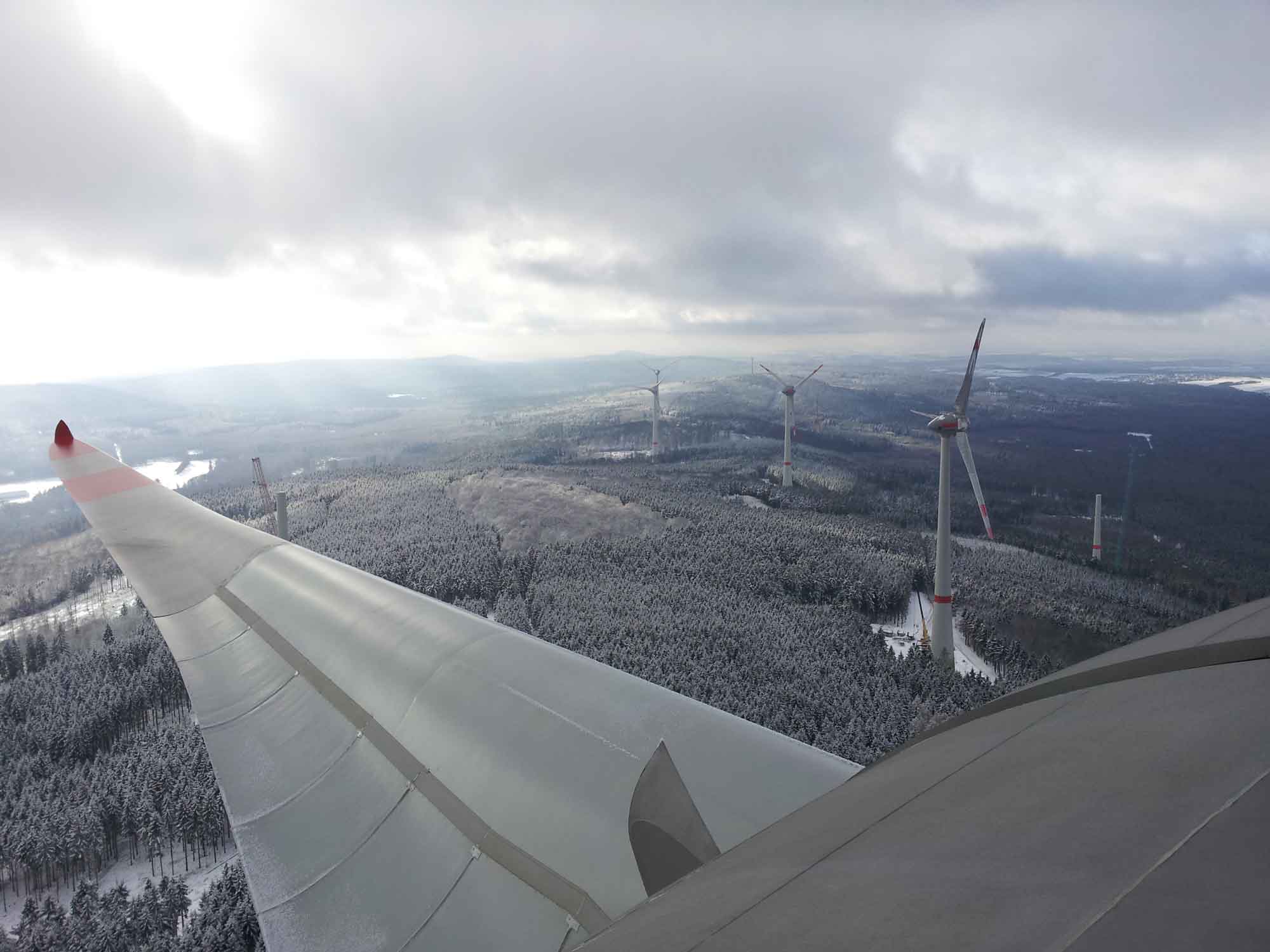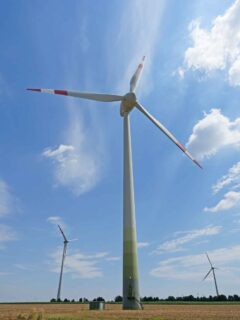Making up around 10 per cent of the electricity mix, wind power is an important source of renewable energy in Austria. In a project entitled SOWINDIC (Smart Operation of Wind Turbines under Icing Conditions), an interdisciplinary team1 led by VERBUND is investigating the smart operation of rotor blade heating systems for wind turbines. Digital technologies are to be used to ensure efficient electricity production even at extremely low temperatures. Austria’ s Alpine climate means that the rotor blades on wind turbines in many areas ice up in the winter months, in some cases severely.
Ice – the enemy of efficiency
The ice alters the aerodynamic properties of the rotor blades, making the wind turbine less efficient while also increasing mechanical wear. Once the degree of icing reaches a certain level, official regulations require the turbines to be switched off and the ice melted either naturally or using a heating system inside the rotor blades. Up until now, the rotor blades’ heating function has primarily been used reactively, i.e. not predictively. The enforced downtime results in unexpected losses of production that in some cases can be significant. Faced with such a situation, producers are required to buy electricity from the balancing market to guarantee a stable supply of electricity.
Researching a preventive mode of operation
Minimising the production losses caused by the ice requires the development of a decision-making algorithm to heat the rotor blades preventively so that ice on the rotor blades can be prevented as it forms. This algorithm is based on meteorological data, weather forecasts, operating data and SCADA (supervisory control and data acquisition) data as well as up-to-date market data. The SOWINDIC project is studying two initially separate approaches to optimising the operation of the rotor blade heating system. Later on, the two approaches are to be combined in a hybrid model. The “Angewandte Mathematik mit Schwerpunkt Optimierung” (“applied mathematics with a focus on optimisation”) working group at the University of Vienna will investigate the suitability of existing machine learning strategies and develop them further. Meanwhile, Meteotest is studying an empirical approach based on physical models. Both strategies are geared towards forecasting production losses caused by iced-up wind turbines as accurately as possible.
Using a network component specially adapted by AIT Austrian Institute of Technology, data flows are to be captured as close to the wind turbine as possible and both algorithms are to be implemented on the turbine with real-time capability and used to control the rotor blade heating in an automated and optimised way. As an operator of wind turbines, VERBUND will focus particularly on validating the models developed and contribute its many years of operational knowledge to the project.

„Unerwartete Stillstandszeiten einer Windkraftanlage aufgrund von Rotorblattvereisung bringen neben Produktionsverlusten auch zusätzliche Belastungen für das Stromnetz. Durch den intelligenten präventiven Betrieb der Rotorblattheizung kann das Stromnetz entlastet und die Produktion stabilisiert werden. “
Simon Kloiber,
Technical Project Manager,
Performance Analyst Wind and PV, VERBUND
Benefits of digital controls
Regulating the rotor blade heating system efficiently will allow wind turbines that have not yet been realised for purely economic reasons to be operated cost-effectively in future, thus opening up new potential sites for wind turbine projects. Intelligent control also offers the advantage of removing the danger posed by shed or falling ice while a turbine is running. The lower mechanical load placed on the turbine also extends its operating life.
energieforschung.at/projekt/smart-operation-of-wind-turbines-under-icing-conditions
SOWINDIC MILESTONES
> Building a platform for generating, supplying and evaluating data
> Using physical models to optimise operation of the rotor blade heating system
> Developing and applying machine-learning methods
> Evaluating and combining the algorithms developed
> Validating the algorithms developed and implementing them in real time
1 PROJECT PARTNERS: VERBUND (project management), AIT Austrian Institute of Technology GmbH, University of Vienna, Meteotest AG


